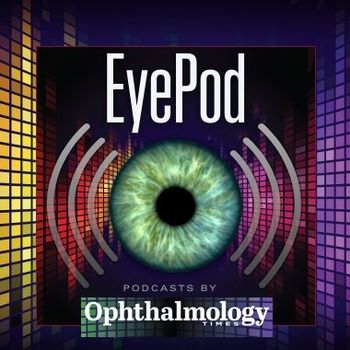
What increased depth of focus can mean to your monofocal IOL patients
Key Takeaways
- Enhanced monofocal IOLs improve depth of focus without splitting light or introducing retinal straylight, maintaining similar dysphotopsia profiles to traditional monofocals.
- TECNIS Eyhance, enVista Aspire, and RayOne EMV are examples of enhanced monofocal IOLs, each employing different methods to extend depth of focus.
Enhanced monofocal IOLs provide a slight depth-of-focus boost without compromising contrast, making them a versatile choice for patients seeking improved distance and intermediate vision while still needing glasses for near tasks.
Historically, the goal with monofocal or monofocal toric IOLs has been to achieve the best possible distance vision—typically at the expense of intermediate and near vision.
Our best monofocal IOLs have long utilized negative spherical aberration (SA) to neutralize the cornea’s positive SA and enhance quality of vision. Today’s advanced monofocal IOLs, however, employ a variety of approaches, including subtle manipulation of SA and optimized power profiles, to slightly broaden the depth of focus without relying on diffractive optics. IOLs in this new category, referred to as “enhanced monofocal” or “monofocal plus,” do not split light or introduce retinal straylight, making them suitable for all eyes. These lenses have dysphotopsia profiles equivalent to traditional monofocal IOLs, with only a very slight—almost indistinguishable—loss of contrast.
Approximately 98% of my monofocal IOL patients now receive one of these enhanced monofocals. This category includes the TECNIS Eyhance (Johnson & Johnson Vision), enVista Aspire (Bausch + Lomb), and RayOne EMV (Rayner) IOLs. Two of these lenses induce controlled positive (RayOne) or negative (Aspire) SA, while the Eyhance lens uses a gradual increase in central power to slightly extend the depth of focus. The RayOne lens is not available in a toric version in the United States, whereas the other two are.
Regardless of which monofocal-plus lens is used, it is important to be more conservative when correcting with-the-rule (WTR) astigmatism and more aggressive when correcting against-the-rule (ATR) astigmatism—even to the extent of flipping the axis from ATR to slightly WTR.
Case examples
Here are three examples of how my patients have benefited from these lenses:
Case 1: Optimized for Distance Vision
A 70-year-old man with moderate myopia and astigmatism presented for cataract surgery. He was a golfer who enjoyed outdoor activities and frequently used a smartphone and tablet but did not engage in close work like reading. After discussing lens options, he chose an outcome optimized for distance vision. I targeted emmetropia in both eyes using TECNIS Eyhance toric lenses, leaving him with 0.29 D of WTR astigmatism.
The monofocal-plus design provided a slight boost in depth of focus (approximately 0.4 D), further enhanced by his residual WTR astigmatism and naturally smaller pupils. Postoperatively, he achieved 20/20 distance vision and J2 intermediate vision, rarely needing reading glasses. While a J2 result is exceptional, most patients with larger pupils and no WTR astigmatism may achieve closer to J6 vision with a monofocal-plus lens—enough to generally be more functional at intermediate, but insufficient for close near vision.
Case 2: Maintaining Sharp Near Vision
A -3.00 D myope accustomed to excellent near vision without glasses sought cataract surgery. She was comfortable using glasses for distance tasks and removing them for near work. To accommodate her preferences, I targeted -2.50 D in both eyes with TECNIS Eyhance IOLs, as replicating sharp near vision with a multifocal lens or monovision is challenging.
Postoperatively, she retained great near vision and achieved 20/70 distance vision, which was better and more functional than anticipated. She now uses glasses for driving and watching TV but appreciates being able to walk to the bathroom at night without her glasses.
Case 3: Mini-Monovision
A 67-year-old woman with a history of monovision contact lens wear opted for mini-monovision targeting. Full monovision typically requires -2.50 D to -2.75 D in the nondominant eye, which can compromise depth perception and be difficult to tolerate. With the additional depth of focus from the TECNIS Eyhance lens, I targeted plano in the dominant eye and -1.50 D in the nondominant eye. She achieved excellent near vision with minimal compromise and was very satisfied with her results.
Patient selection and counseling
Enhanced monofocal IOLs are labeled for use in all eyes, similar to traditional monofocals. However, they are not my first choice for patients with extensive visual field loss or severe age-related macular degeneration (AMD), as these patients require maximal contrast sensitivity and may derive little benefit from enhanced depth of focus. For keratoconic or post-hyperopic LASIK eyes, I prefer a SA-neutral lens, while for post-myopic LASIK patients seeking spectacle independence, I often recommend the Light Adjustable Lens (RxSight).
Monofocal-plus lenses are also unsuitable for patients desiring full spectacle independence. While some, like the first case described, achieve functional near vision, I ensure patients understand they will still require glasses for many tasks. I make it clear what they cannot do without reading glasses, such as reading a menu, a newspaper, or grocery labels.
Conclusion
Patients are consistently pleased with enhanced monofocal IOLs. They appreciate the slightly extended depth of focus that improves functionality in daily tasks, such as cooking, navigating in a car, or shaving. It is always gratifying to see patients checking text messages during their postoperative visits—a sign of their satisfaction with their visual outcomes.
Beeran Meghpara, MD
E:[email protected].
Dr Meghpara is Clinical Assistant Professor of Ophthalmology at Sidney Kimmel Medical College at Thomas Jefferson University and Director of the Refractive Surgery Department at Will Eye Hospital in Philadelphia, Pennsylvania. He is a consultant for Johnson & Johnson Vision.
Newsletter
Don’t miss out—get Ophthalmology Times updates on the latest clinical advancements and expert interviews, straight to your inbox.












































